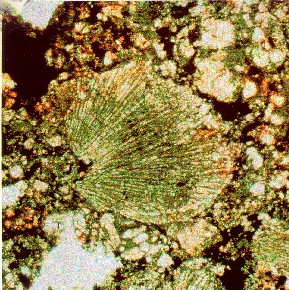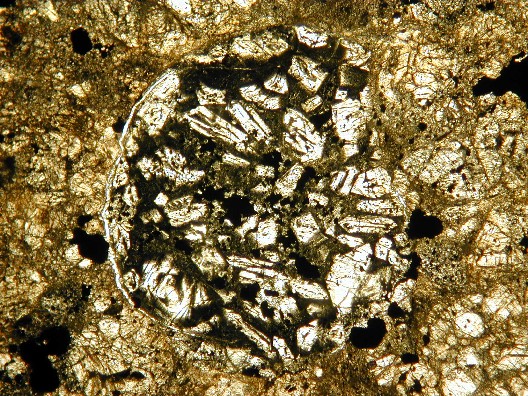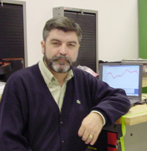|
Leonid MAC |
| home |
| View the shower |
| Mission Brief |
| Science Update |
| Media Brief |
| links |
|
Centro de Astrobiología (CSIC-INTA) Associated to NASA Astrobiology Institute
Dr. Jesus Martínez-Frías in the Laboratory
for Robotics and Planetary Exploration, Last updated: October 2002
Brief Biographical Information: Planetary Geologist, Head of the Laboratory for Planetary Geology at the Centro de Astrobiologia, Professor Ad-Honorem of Cosmology and Planetary Geochemistry at the Polytechnical University of Madrid, Regional Coordinator of The Planetary Society in Spain , Spanish representative in the European Science Foundation - IMPACT Program. .Research: Research Interests ( Publications ):
Principal Investigator for the Centro de Astrobiologia Near-IR spectroscopy experiment. Dr. Martinez-Frias is especially interested in the mineralogical and geochemical comparison between direct measurements of chondritic matter and remote sensing of meteor showers. He is also interested in the identification of possible distribution patterns of some significant elements (C, Si, Ca, Mg, Al, Ti, Fe, Ni). He has participated in the scientific design of the experiment. His main role will be the coordination of the scientific and technical work, and also the comparison of the measurements of elemental abundances by this NIR spectrometer to the abundance of the chemical elements in direct studies of meteorites. 
(From left to right) Javier Martín, Patrick Mcguire
and Jesús Martínez-Frías |

|

|
Pictures of two chondrules, under transmitted light microscopy, from
Spanish meteorites
(Valencia and Olivenza ordinary chondrites).



